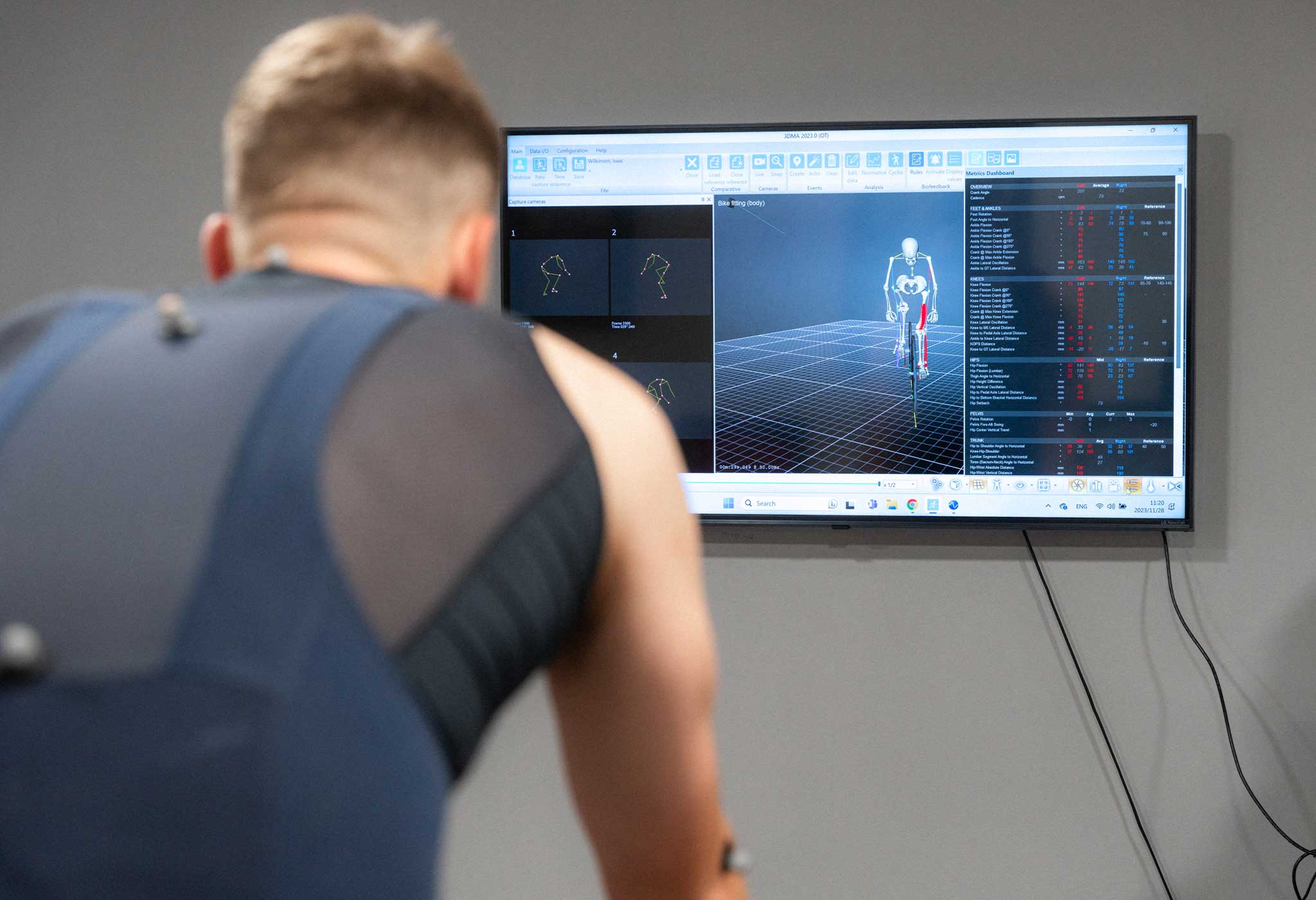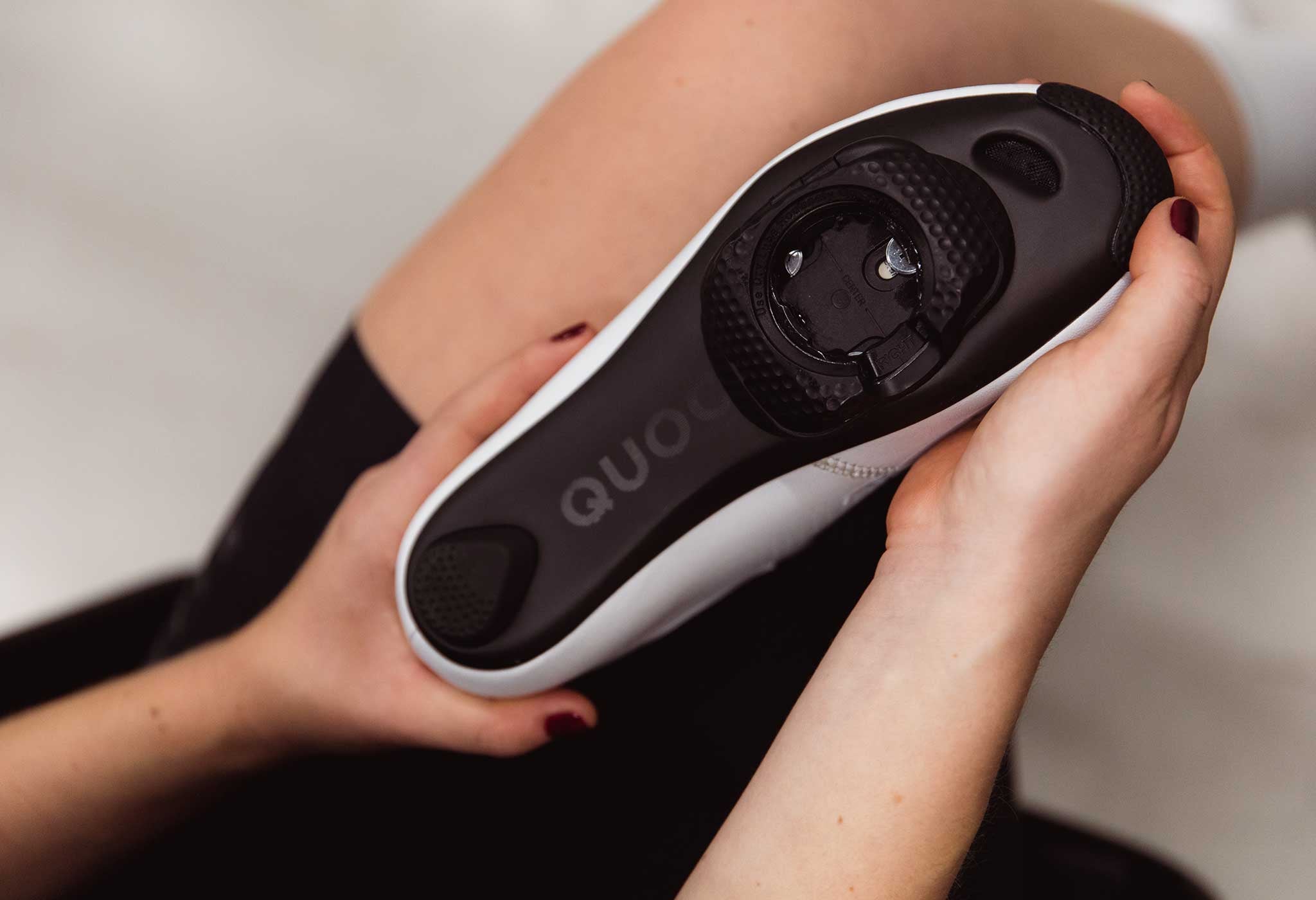Jon Underhill is a passionate cyclist and professional independent bike fitter with a family legacy originating in shoe repair and adjustments. Naming his studio after his driving purpose: "Creating the Optimal Rider Experience" (CORE), we couldn't think of a better person to ask when it comes to shoe fit and understanding this key connection between the body and bike.

What is bike fitting?
Bike fitting is the science and art of assessing individual rider needs and setting them up for the type of cycling they want to undertake in the most optimal way for their own unique body composition.
Every rider is different, and no two bike fits are the same. This means that there is not a one size fits all approach to setting people up. Copying something a pro has done or making a change that a friend advises isn't always advisable and can often cause you more problems than you are trying to solve.
Your body is not isolated parts, they are connected and even the smallest adjustment can change your kinetic chain and alter things you would not normally link. This is where the skill of a Bike Fitter takes over.
As a bikefitter, I like to describe the process as a journey of discovery for you and me as we work together to find your optimal setup. In my mind, not only should you leave with some adjustments to your bike (if needed) and a smile on your face but I also like you to leave with a greater understanding of how your body works and reacts to changes in your bike setup.

What role does the foot play in a bike fit?
We always start with feet, and I would recommend that any bike fitter you seek out should take a good look at yours. Your feet are arguably the most important part of your body when it comes to bike fitting. The point at which the power you have generated transfers to the bike is critical to get right and ensure you are not wasting watts and most importantly not causing yourself any potential harm, injuries and worse keeping you off your bike.
So how do we ensure your feet are setup properly? Well first off, we take a good look at your shoes. Most cyclists that visit me often have purchased their shoes based on price and colour online and no other considerations taken. They have never had their feet measured for length and width and purchased unseen and not tried on. Most people are not even sure what to look for in a good cycling shoe. If you are then read on.

How important is getting the right shoe fit?
When I ask my customers "what if I told you that you could improve your performance at a small cost compared to most bike components?" usually eyes light up at the prospect of some new super-secret technological advance, which then suddenly turns to amazement as I explain to them that their own shoes are not correct for them. Of course, some people's shoes are perfect for them but often this is not the case in the studio.
If I had followed my dad into the family business, it would have seen me become the 5th generation of shoe repairer. I spent my weekends growing up helping dad in the shop repair shoes and finally learning how to size feet correctly and adjust them utilising stretching machines and hand-crafted wedging. The walls were covered in boxes of shoes of different sizes and types to find you the perfect fit. You were greeted and asked what sort of shoe you would like before trying on different styles and seeing how different shoes compared.
This all now seems like a distant memory with the digital age of online purchasing and next day delivery. This experience however has been a valuable tool when setting up CORE Bike Fit. Ensuring you the rider compare shoes and how they feel first hand when selecting them is an important part of the bike fit process and experience. If you're not comfortable it's not right for you and how would you know without comparing options?
Education on shoes from me over the next challenge to overcome is the thought that they are just shoes. I like to describe cycling shoes as an essential part of your bike, a component, rather than a clothing item. This helps the rider understand the importance and shift the mindset on shoes. This is always invaluable, and I spend a lot of time on this.

What do I look for in a good cycling shoe?
A good set of stiff soled shoes, with a toe box that is wide enough, most are not. Adjustable cleat locations and the correct support are all key ingredients to getting your feet setup as the foundation of your bike fit.
Throughout my personal independent testing, I have found QUOC to match my requirements and found that their range of shoes at different price points coupled with my experience and flexibility of my own custom adjustments make them the best cycling shoe brand to work with.
Of course, this is just the first part of any good bike fit and the process extends further than just feet and shoes, but my thoughts always come back to #Focusonyourfeet. If you get that right the bike fit process is much easier.
It is always my recommendation to get a full bike fit from an independent professional with an approach that you are comfortable working with to ensure you are set up safely and correctly for the type of cycling you want to achieve.
QUOC's Bike Fitter Recommendations:
Photography: Andy Donohoe & Harry Powell
